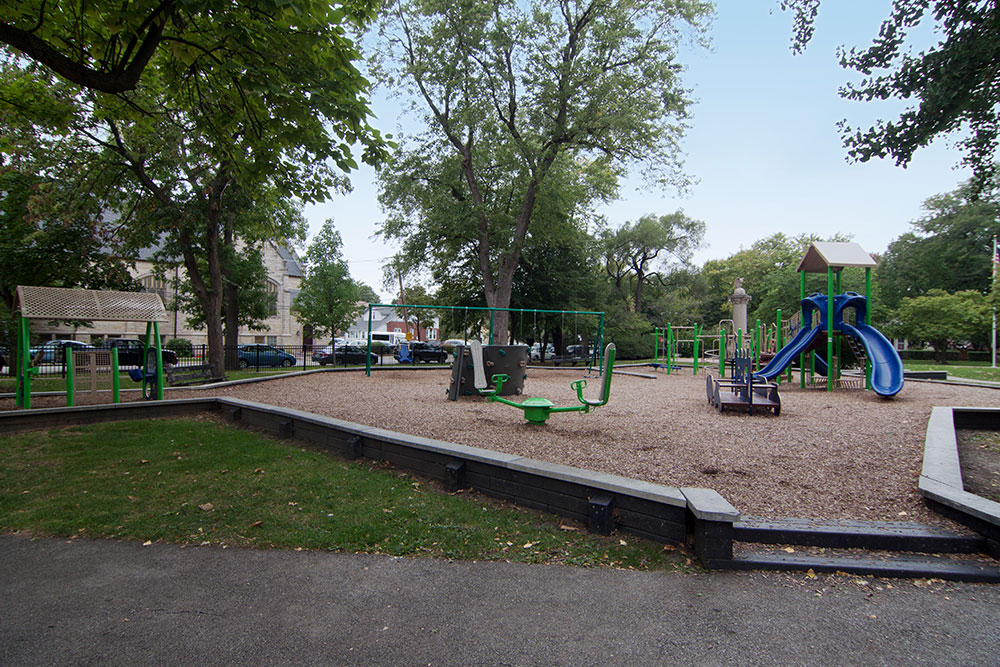Welcome to Edison Park
Edison Park is a charming neighborhood located on the northwest side of Chicago, Illinois. Known for its tree-lined streets, well-maintained homes, and close-knit community, it offers a suburban feel within the city limits.
One of the defining features of Edison Park is its variety of single-family homes, ranging from classic brick residences to newer constructions with modern designs. The neighborhood's architecture showcases a mixture of styles, including bungalows, Tudor cottages, and spacious ranch houses.
The neighborhood's main commercial strip, located along Northwest Highway, offers an array of local businesses, including restaurants, cafes, boutiques, and professional services. The dining options cater to a diverse range of tastes, with a mix of well-established favorites, such as Italian eateries and Irish pubs, as well as newer spots showcasing global cuisines. Additionally, residents can find all necessary amenities close by, including grocery stores, pharmacies, and fitness centers.
Olympia Park, the largest green space in the area, offers a playground, sports fields, tennis courts, and a swimming pool. The neighborhood is also adjacent to Forest Preserve trails, providing opportunities for hiking, biking, and wildlife observation.
The transportation options in Edison Park are excellent, making commuting to other parts of Chicago convenient. The Edison Park Metra station connects residents to downtown Chicago in under 30 minutes, while various bus routes provide additional transportation choices. Proximity to major expressways, including the Kennedy and Edens expressways, allows for easy access to the rest of the city and beyond.
Overall, Edison Park is a residential neighborhood in Chicago, offering a quiet environment while still being connected to the city's energy.
-
Looking to Buy? Search Edison Park listings
-
Interested in Selling? Request a Listing Presentation
-
Want More Information? Sign up for our Trends Report
For Sale in Edison Park
-

7215 W Farwell Avenue
$439,900
- 2 beds
- 1 baths
- Edison Park
- Detached Single
-

7221 N Octavia Avenue
$799,000
- 5 beds
- 3.1 baths
- Edison Park
- Detached Single
-

6453 N Northwest Highway 2C
$245,000
- 2 beds
- 2 baths
- Edison Park
- Attached Single
-

6875 N Northwest Highway 1D
$199,900
- 2 beds
- 1 baths
- Edison Park
- Attached Single
-

7458 W Touhy Avenue
$425,000
- 3 beds
- 2 baths
- Edison Park
- Detached Single
-

7421 N Oconto Avenue
$570,900
- 4 beds
- 2 baths
- Edison Park
- Detached Single
-

6710 N OLIPHANT Avenue G
$239,000
- 2 beds
- 2 baths
- Edison Park
- Attached Single
-

6800 N Overhill Avenue 1A
$189,900
- 2 beds
- 1 baths
- Edison Park
- Attached Single
-

7404 N Overhill Avenue
$749,000
- 4 beds
- 3.1 baths
- Edison Park
- Detached Single
-

6727 N Oketo Avenue
$539,900
- 3 beds
- 1.1 baths
- Edison Park
- Detached Single
-

6490 N NORTHWEST Highway 3F
$234,950
- 2 beds
- 1.1 baths
- Edison Park
- Attached Single
-

6841 N Northwest Highway 3C
$235,000
- 2 beds
- 2 baths
- Edison Park
- Attached Single
-

6681 N Northwest Highway
$850,000
- Edison Park
- Land

Want more detailed information on Edison Park?
Get a Trends Report delivered to your inbox monthly
Send Me Edison Park Trends












